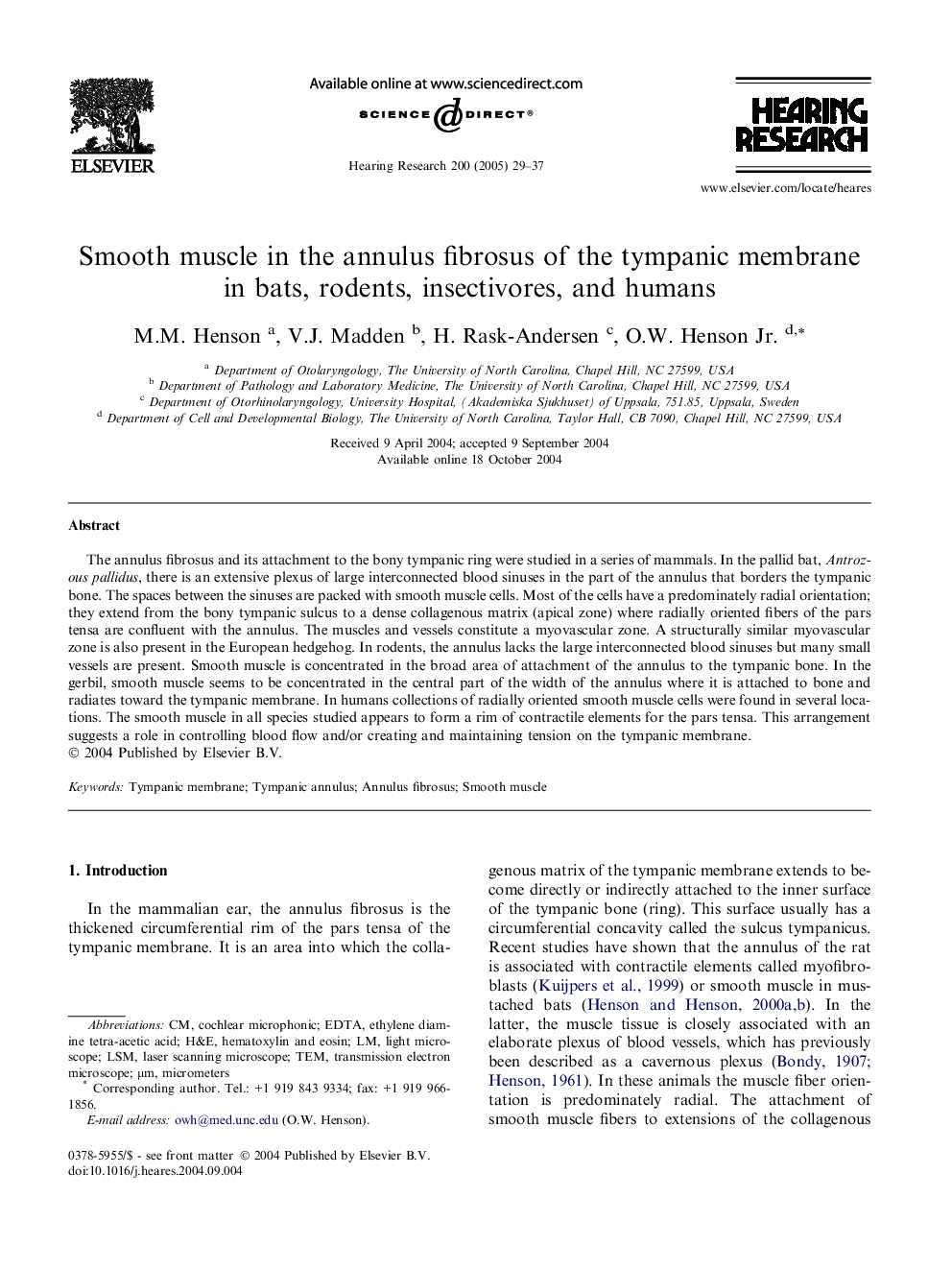| Article ID | Journal | Published Year | Pages | File Type |
|---|---|---|---|---|
| 9436689 | Hearing Research | 2005 | 9 Pages |
Abstract
The annulus fibrosus and its attachment to the bony tympanic ring were studied in a series of mammals. In the pallid bat, Antrozous pallidus, there is an extensive plexus of large interconnected blood sinuses in the part of the annulus that borders the tympanic bone. The spaces between the sinuses are packed with smooth muscle cells. Most of the cells have a predominately radial orientation; they extend from the bony tympanic sulcus to a dense collagenous matrix (apical zone) where radially oriented fibers of the pars tensa are confluent with the annulus. The muscles and vessels constitute a myovascular zone. A structurally similar myovascular zone is also present in the European hedgehog. In rodents, the annulus lacks the large interconnected blood sinuses but many small vessels are present. Smooth muscle is concentrated in the broad area of attachment of the annulus to the tympanic bone. In the gerbil, smooth muscle seems to be concentrated in the central part of the width of the annulus where it is attached to bone and radiates toward the tympanic membrane. In humans collections of radially oriented smooth muscle cells were found in several locations. The smooth muscle in all species studied appears to form a rim of contractile elements for the pars tensa. This arrangement suggests a role in controlling blood flow and/or creating and maintaining tension on the tympanic membrane.
Keywords
Related Topics
Life Sciences
Neuroscience
Sensory Systems
Authors
M.M. Henson, V.J. Madden, H. Rask-Andersen, O.W. Jr.,
